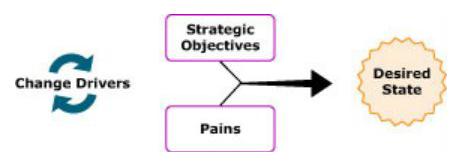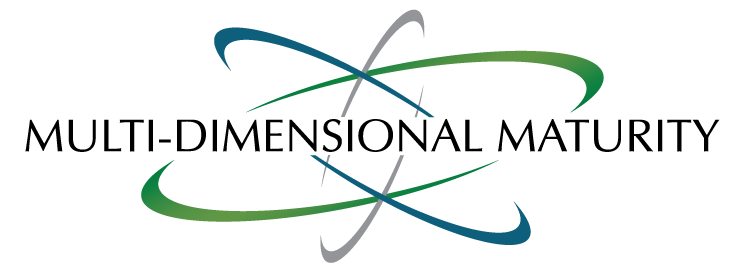Motive
What are the critical business issues (change drivers) compelling process improvement?
The organization direction for achieving performance excellence through process improvement should be established using both a top-down and a bottom-up approach.
Top-Down – Setting Direction Based on Strategic Objectives
Strategic objectives
are the critical “market drivers,” those factors which ultimately determine organizational success or failure. Organization leaders determine critical business drivers and associated strategic objectives to answer the question, “What do we want to achieve as an organization?” Typical strategic objectives are market share/time to market, revenue growth/profit growth, and image as a reliable, cost-effective, value-adding supplier. In a military context, market drivers might be responsiveness, cost, or quality.
Business purposes
focus on activities that the organization performs to achieve the strategic objectives. Purposes supporting the strategic objectives can be derived by addressing operational issues such as predictability (cost, schedule, capability, quality), amount of rework, customer satisfaction, cycle time, and employee satisfaction/reduced turnover. Department leaders identify business purposes and goals which support the strategic objectives. Key questions to ask at this point are “What do you want the process improvement program to accomplish? How will you determine if it has been successful?"
Process goals
supporting the business purposes can then be derived which address more precisely defined issues. Example goals are understanding and controlling customer requirements, developing realistic plans, accurately tracking progress in order to take corrective action when there are deviations from plans, collecting historical data, and minimizing defects in deliverables. Technical and process leaders document process goals that support the business purposes. These are reviewed and approved by the appropriate organization and department leaders.
Key indicators
can then be derived to help determine whether the process goals are being accomplished. Typical measures include planned vs. actual xxx, defect rate, amount of rework (quantity or cost), and productivity measurements. Technical and process leaders determine key indicators that measure progress toward the goals. These are reviewed and approved by the appropriate organization and department leaders.
Bottom-Up – Setting Direction Based on Organization “Pains”
Alternatively, or in concert with the top-down approach, an organization should determine its most significant problems – where its greatest “pains” are. This can be done a number of different ways. Typically, technical leaders and process owners meet with users to identify significant problems which impact operations and/or business results. Leaders and users then brainstorm possible remedies to address the pains. Process owners identify related process changes based on the proposed remedies. These proposed changes then serve as the basis of action plans to address the identified pains. Pains can also be identified using one of the reduced-scope appraisal methods.

Integrating the Two Approaches to Develop a Vision of the Desired State
By considering the change drivers in concert with the organization strategic objectives and “pains” one can develop a vision of the desired state, what the organization should look like and how it should behave after the desired changes are achieved.
